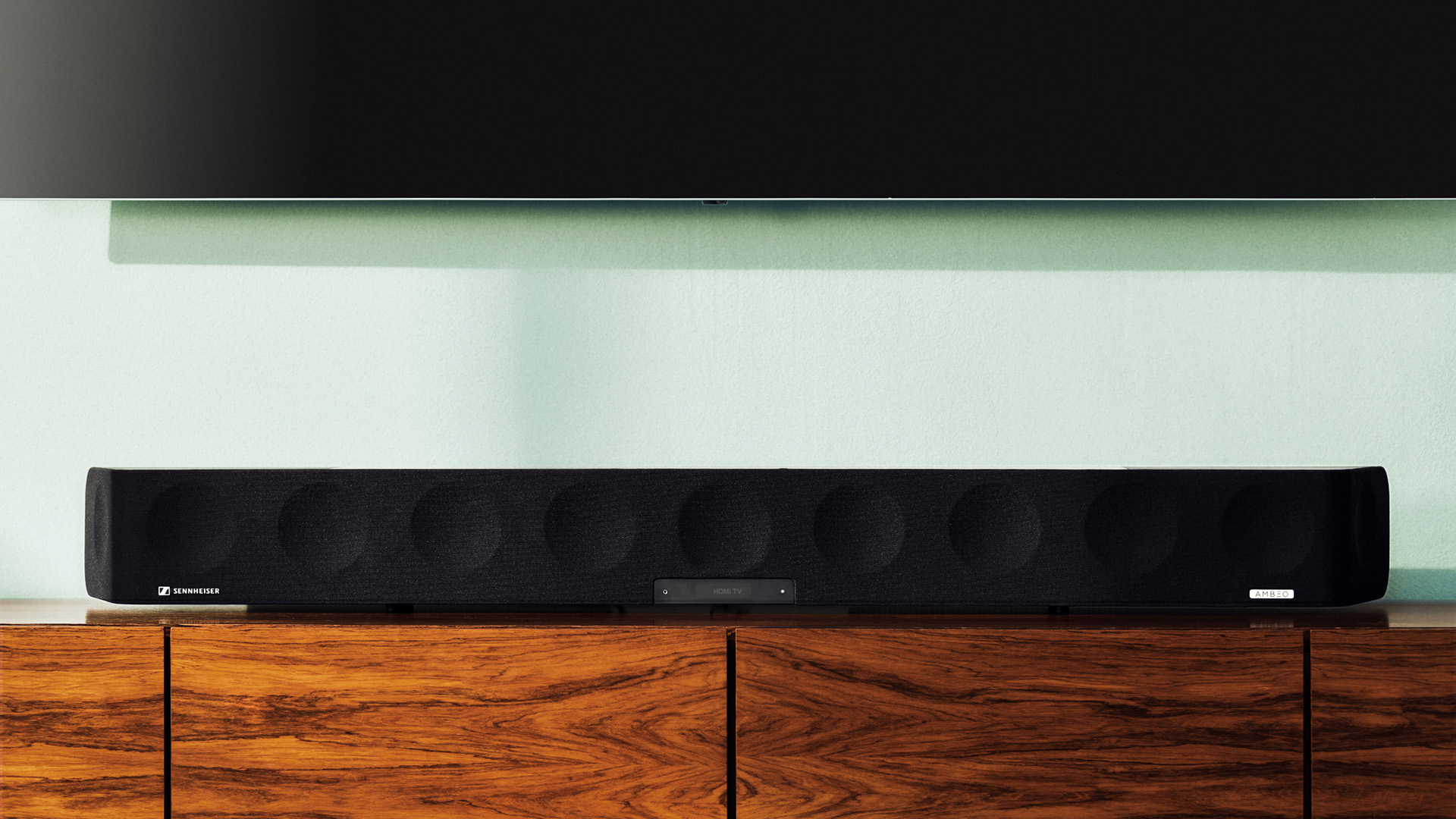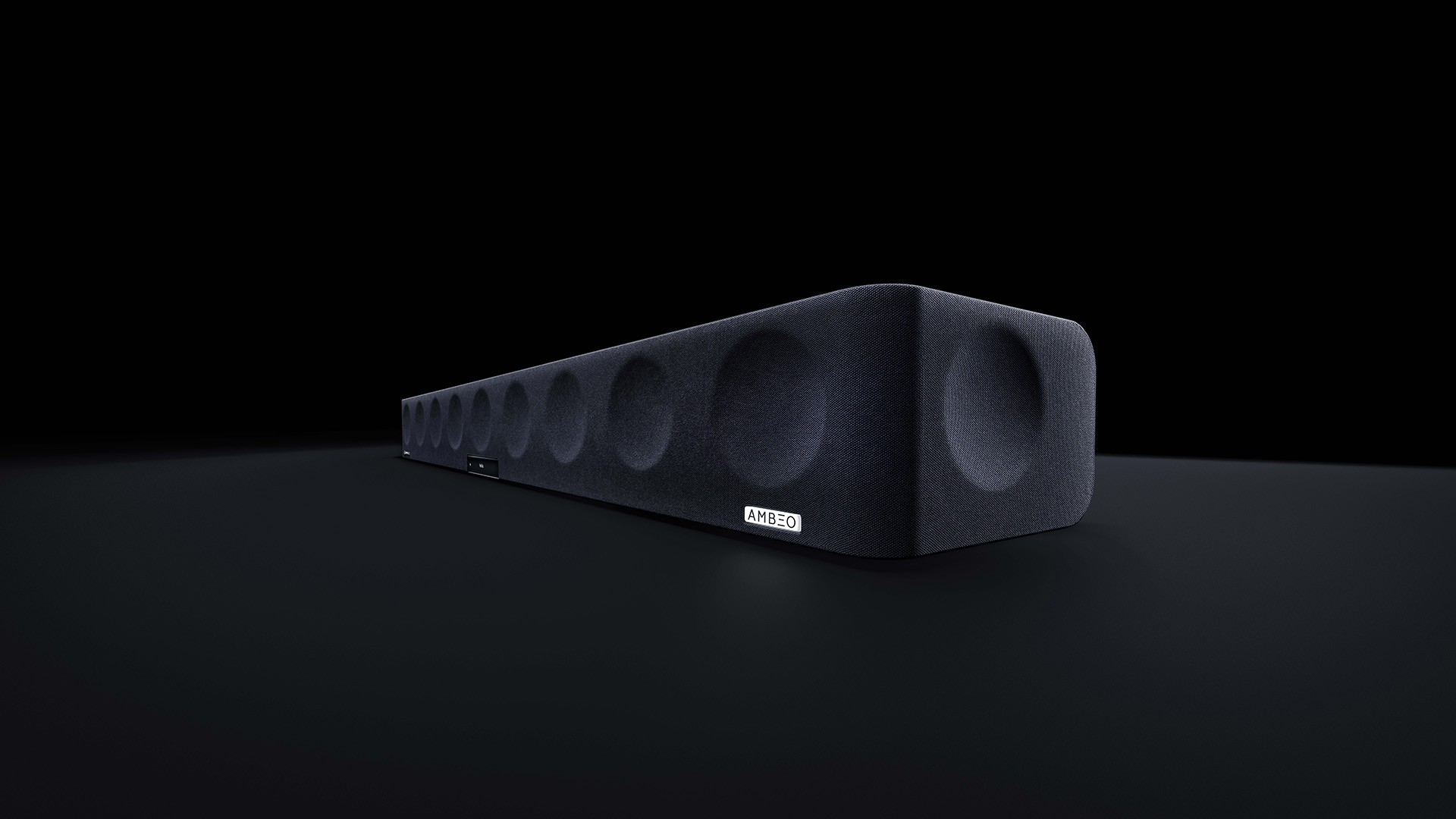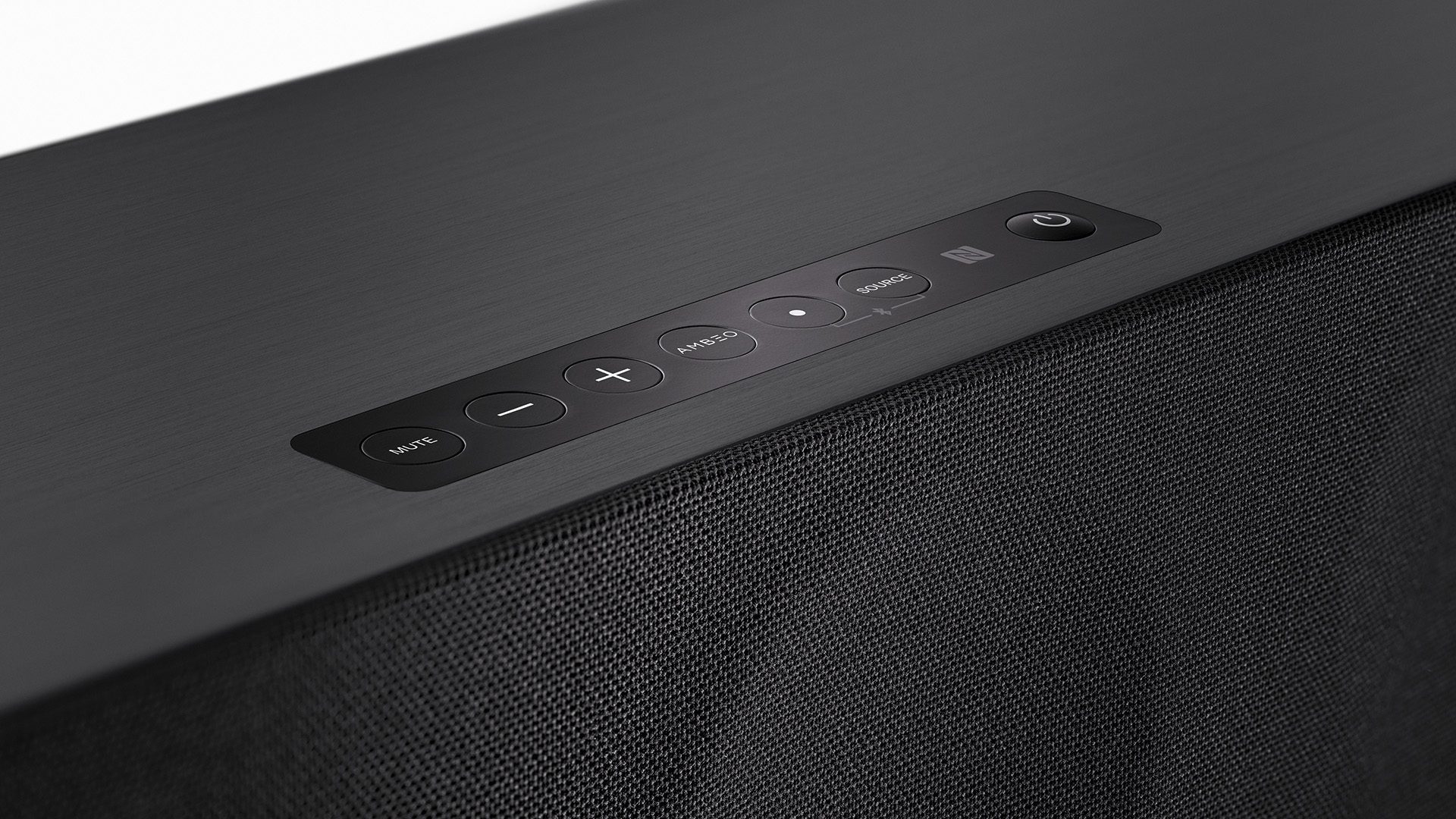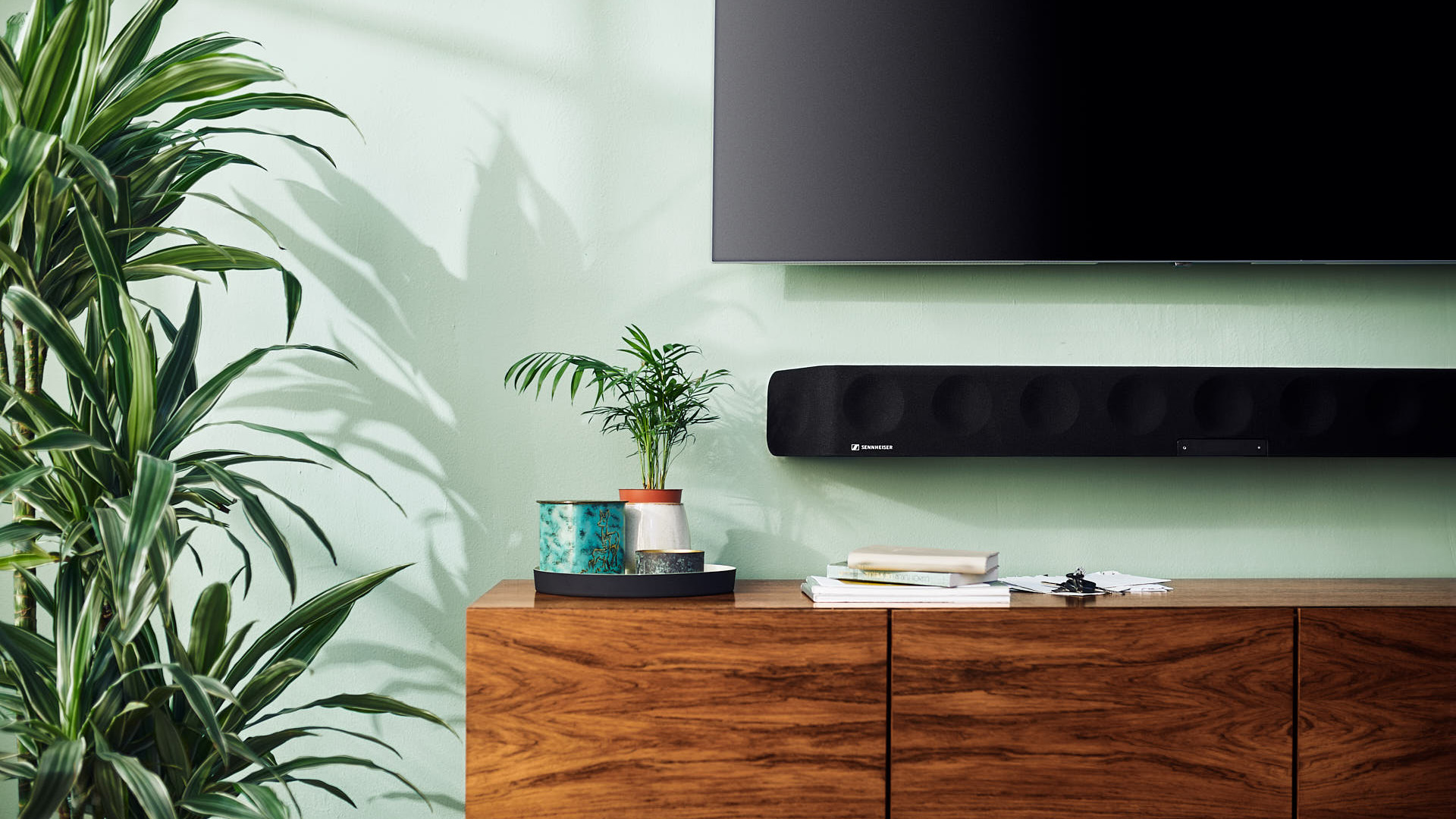Sennheiser AMBEO Soundbar review: one device to rule them all
If you want the very best sound from a single soundbar, the Sennheiser AMBEO is for you


The Sennheiser AMBEO soundbar is one of the more expensive single-speaker Atmos options, but it also is one of the best performing.
-
+
Supports Dolby Atmos, DTS:X, MPEG-H, and 360 Reality Audio
-
+
Unsurpassed surround soundbar performance
-
+
Excellent frequency response from low to high
-
+
HDMI 2.1 output with eARC
-
-
Tall, so might block the bottom of some TVs
Why you can trust T3
The Sennheiser AMBEO Soundbar is a high-end home audio system and, despite being an audio specialist, Sennheiser’s only soundbar offering. In this review, I have put the AMBEO through its paces, to find out if it can deliver on its bold promises of delivering a multi-speaker experience from a single unit. The good news is that this is one of the best soundbars you can buy that comes in a single device.
Sound in home theater is all about supporting the picture and immersing us in what we’re watching. Video is limited to a single screen in front of us, but sound can come from all around, giving us a complete experience. Right now, the most advanced home technology for sound is Dolby Atmos. It incorporates height channels to expand the sound field, allowing the effects and environment to surround the viewer more completely.
The problem with Dolby Atmos is that it usually relies on a discrete setup with speakers installed on the ceiling or modules placed on front speaker towers that aim up. With the AMBEO Soundbar, Sennheiser takes all those discrete speakers and puts them in one long soundbar. It’s a more elegant and spatially economical solution. Especially for someone that’s renting a smaller space and would prefer to keep their security deposit over drilling into their ceiling.

The 13 speakers inside the AMBEO
Sennheiser AMBEO Soundbar review: price and features
Priced at $2,500/£2199/AU$3999, the Sennheiser AMBEO soundbar costs more than most — including the LG SN11RG. But what the AMBEO does that most others do not is confine everything needed within that single bar. There are no extra surround speakers or subwoofer to worry about plugging in and finding extra space to put them. That does mean it’s a pretty beefy soundbar, measuring 49.8 x 6.7 x 5.3 inches (126.5x13.5x17.1cm) and weighing 40.8 pounds (18.5kg). The width matches well with a 65-inch TV, although if it’s placed on the same surface of that TV its height can block the bottom of the screen.
The AMBEO has a total of 13 speakers—six 4-inch woofers and three 1-inch tweeters along the front, two additional 1-inch tweeters angled on each side, and two top-firing 3.5-inch drivers for the height channels. All together they create a 5.1.4 configuration that Sennheiser says covers a frequency range of 30 Hz to 20 kHz.
The front and side speakers are covered with a single, continual cloth grille with the Sennheiser badge on the left and an illuminated AMBEO badge on the right that illuminates when the AMBEO processing is turned on (more on that later). In the center is an OLED display that scrolls messages and provides input and volume information. Both the AMBEO light and OLED display brightness can be adjusted with the Sennheiser Smart Control device app. I didn’t find the lights distracting in their default auto setting while watching movies.
There’s a strip of buttons on top of the soundbar for controlling volume, toggling source and the AMBEO processing, and turning the bar on and off. These, plus a few more sound processing options, are all found on the remote and in the mobile app. The remote has a good heft without being too heavy, although it’s shaped and weighted the opposite of what I would expect, which caused me to consistently pick it up backwards. The top is thicker and heavier then it slims out at the bottom.
Get all the latest news, reviews, deals and buying guides on gorgeous tech, home and active products from the T3 experts
A good collection of connections populate the back of the soundbar and an attached adjustable rubber wrapper keeps all the cables together. There’s an HDMI 2.1 output with eARC that connects to the TV. If your TV has eARC too, you’ll be able to pass Dolby Atmos information from the TV to the soundbar (there’s an optical input if your TV doesn’t have eARC).
Sources can be connected to three HDMI 2.0a inputs that will passthrough a 4K HDR video signal—including Dolby Vision. If you have a subwoofer you can connect it to a pre out. Rounding out the connections are an Ethernet, stereo RCA aux in and a USB port for service. The USB can provide up to 5V, 1A of power, so it’s possible to connect a streaming stick into one of the HDMI ins and power it from the USB.
The Sennheiser AMBEO supports a plethora of surround formats including Dolby Atmos, DTS:X, and is one of the first to support MPEG-H. A recent firmware update has also added support for Sony’s new 360 Reality Audio, developed in conjunction with the PS5.

Sennheiser AMBEO Soundbar review: sound quality
The Sennheiser AMBEO soundbar is a powerful beast. The volume is on a slider from zero to 50 and I never found the need to go above 30 while watching in my living room. Even that was pushing the boundaries for my ears (and likely the ears of my neighbors).
The new 4K release of Lord of the Rings has quickly become a favorite of mine for all sorts of testing, including Dolby Atmos. When the Rohirrim arrive at Pelennor Fields to engage the forces of Sauron that are laying siege to Gondor, there’s plenty of opportunity for the Sennheiser AMBEO soundbar to show off. As the horses charge, orcs let arrows fly that can be heard passing from right to left. The breadth of the sound field is impressive.
As the front line is breached, it opens up even more as you’re placed in the middle of the battlefield. The bodies of orcs are crunched under the hooves of horses across the front, battle cries of the Rohirrim are spread to the surrounds and envelop the listener, and sword clanks can be heard punctuating different locations in all directions. The placement of all the sounds in the Atmos soundtrack isn’t 100% accurate, but it’s real close. The only minor drawback is that the sounds are all a little forward in the soundscape.
A few chapters later is the arrival of the Haradrim and their Mûmakil. These elephantine creatures have the ability to send rumbles through an apartment as their feet stomp across the field. The Sennheiser performed admirably, especially for a single soundbar, but as frequencies approached deep bass it expectedly lost some the thumping that you can feel in your chest and shakes your soul. It’s really the only thing that’s missing from the performance of the AMBEO soundbar.
Sennheiser products in general are voiced with a little more presence in the upper midrange. This can lead to clarity of dialogue, but it can also verge on being a bit oppressive. With the AMBEO it’s able to achieve some excellent dialogue clarity without being too in your face. It also means other things within that frequency range will be accentuated. In the case of Lord of the Rings, the Hardanger fiddle that Howard Shore uses to symbolize Rohan and their people easily stands out in the mix against the rest of the orchestra and all the sounds of battle I mention above.
A night mode is available to keep your neighbors on your good side. It compresses the overall dynamic range of the sound while maintaining clarity of dialogue.
The Sennheiser AMBEO soundbar can just as easily fill a room with music streamed from a mobile device. I connected my iPhone quickly via Bluetooth (turning it on with the app) and put on Surfer Rosa by The Pixies. With the AMBEO setting turned off, the soundbar plays it as a stereo signal that sounds good but is not a very wide sound field. The AMBEO 3D emulation broadens that significantly. There are three options adjustable within the app: light, standard and boost. Of the three, I preferred the standard setting. In any mode at louder volumes, cymbal crashes were a bit piercing to my ears

Controls on the top of the AMBEO
Sennheiser AMBEO Soundbar review: design and usability
To get the best out of the Sennheiser AMBEO soundbar, it needs to go through a setup process that uses an included calibration microphone. The microphone is at the end of a 26-inch rod that hinges from a solid metal base with rubber feet to keep it stable. You place it at your listening position and plug it in with its long attached wire to an input on the front of the soundbar. Press the AMBEO button to start the calibration process and stand back (there’s a countdown on the OLED so you know when it starts). A dozen or so frequency sweeps sound from the soundbar and then the results are processed. The whole procedure takes only a couple minutes to complete.
My room is far from the ideal setup (Sennheiser recommends the soundbar to be placed equidistant from the side walls and the ceiling). But even in my room — with an archway to the right and an extended room to the left — it was able to achieve remarkable results. You can run the calibration from the remote (or buttons on top of the soundbar), or a more detailed option is available by using the Sennheiser Smart Control app. If you want to run calibration with an additional sub there’s a toggle for it in the app.

Sennheiser AMBEO Soundbar review: verdict
After the past year, we’ve all discovered how important the home cinema experience can be. And with the future of movie releases and cinema a bit of an unknown right now, getting as close to a theatrical experience is key. Thanks to Dolby Atmos, DTS:X, and now Sony’s 360 Reality Audio, we are able to have sound that completely fills the space. The Sennheiser AMBEO soundbar accomplishes a convincing Atmos presentation with ease and precision.
There’s, of course, no avoiding the price tag — and the fact that it’s up to $1,000 (approx. AU$2,000) more expensive than some other options. But the AMBEO is able to deliver its excellent sound without the need for additional surround speakers or a subwoofer, all of which require more outlets, more cables, and more space. If you really want a perfect sound stage, a multi-speaker setup still has the edge, but the Sennheiser AMBEO soundbar is one of the best all-in-one Atmos solutions I’ve heard.

Sennheiser AMBEO Soundbar review: also consider
The B&O Beosound Stage is an incredibly stylish, single-speaker Atmos solution, like the AMBEO, for around the same price, depending on the finish. The sound isn’t quite as polished as the AMBEO and it has only one HDMI input.
If you don’t have $2,500 (AU$3,999) to drop on a soundbar, there are other options available for a bit less. The aforementioned LG SN11RG has a sleek design and nice detail to the surround and height channels. It’s also $900 (AU$2,100) less than the Sennheiser. An even cheaper option is the Samsung HW-Q90R, but the drawback for both the Samsung and the LG is they have separate subwoofers and surround channels that need to be placed around your room. The Samsung surrounds can also have wireless connection issues.
The Sonos Arc is a single soundbar, like the AMBEO. But its connectivity is severely lacking, having only one HDMI connection. It doesn’t do quite as good a job at creating the Atmos sound field, either.